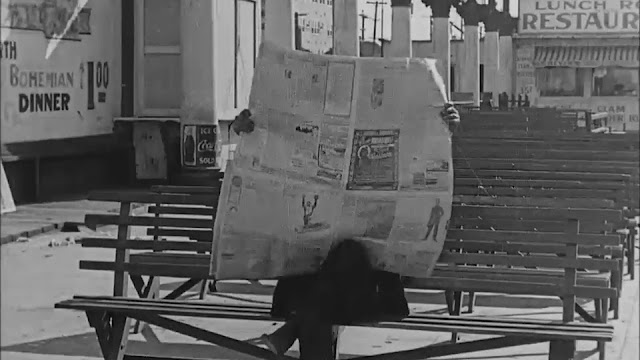Introduction to Silent Cinema
The short films by Buster Keaton are part of Section C: Film Movements - Silent Cinema on the second exam paper Component 2: Global Filmmaking Perpectives.
You need to become familiar with four of Buster Keaton's short films: One Week (1920), The Scarecrow (1920), The 'High Sign' (1921) and Cops (1922). An introduction to each of the selected short films can be found by clicking on the relevant links below.
In the exam you will answer one question from a choice of two. You should spend 30 minutes on your essay. The questions could be on one of the Core Areas of Study such as an aspect of film form (focusing on any of cinematography, mise-en-scene, editing, sound or performance), representation (of gender, ethnicity, age or social class), aesthetics (the overall style and feel of the films), or contexts (social, cultural, political, institutional, economic or technological).
Alternatively, questions could be on the Specialist Study Area for Section C: Film Movements - Silent Cinema - testing your understanding of a specific critical debate - the realist and the expressive. More information about this specific critical debate can be found by clicking on the link below. It is likely that one of the questions will be on a core study area whilst the second question will be on the specialist study area.
Remember that, regardless of the question, you must make explicit references to key scenes from at least two of Buster Keaton's short films to support your points.
When writing about Buster Keaton's short films it is important to remember that you discuss them in the context of silent cinema. The silent period, which ran for roughly the first thirty years of cinema, saw filmmakers working to develop film narrative (the ways that stories are told) and film form (the language of cinema such as cinematography, mise-en-scene, editing, performance and, eventually, sound). In many ways it was an experimental and developmental period of filmmaking and whilst film remained silent there was an emphasis on communicating meaning through purely visual means.
In reality, many of the films from this period (and certainly those we are looking at by Keaton) were rarely completely silent. Many were accompanied by music played by a pianist, an organist or even a full orchestra and sound effects often accompanied the visuals. What was absent, however, was recorded dialogue and, as a result, the visual elements of film form took on greater importance in communicating meaning and generating a response from spectators.
Buster Keaton was a true auteur (a filmmaker with a distinctive style and a high degree of control over the films he made) of silent cinema, and silent film comedy in particular. Between 1920 and 1922, Keaton directed, co-wrote, edited and starred in nearly twenty short comedy films, known as 'two-reelers' (short, silent films around twenty minutes long which were screened in cinemas as supporting films for feature-length movies). These films are noted for being beautifully crafted, funny and inventive and their popularity helped cement Keaton's star persona and his importance as a silent film comedian. As a result, he rose to international stardom.
The four short films we are studying showcases Keaton's most striking work within the short film medium and illustrate his trademark style (stunts, simple comic set-ups, flat lighting, static camerawork and a sparse use of intertitles) and themes (such as Keaton's relationship with machinery and modernity, and heterosexual romance).










Comments
Post a Comment